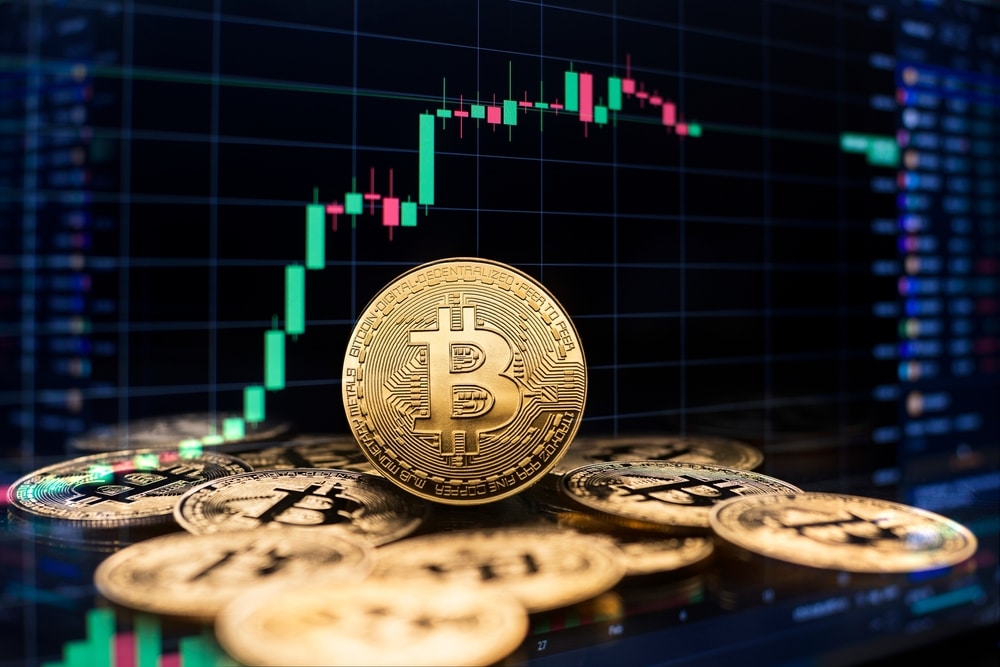Key Insights:
- Bitcoin could rally as U.S. debt rises, with investors seeking alternatives amid economic uncertainty and inflation concerns.
- Michaël van de Poppe draws parallels between Bitcoin’s cycle and gold’s surge following the 1930s Great Depression.
- Growing distrust in traditional financial systems may boost demand for Bitcoin, DeFi, and decentralized assets as safer alternatives.
The crypto community is closely watching Bitcoin (BTC), with some analysts suggesting that its next major price surge could be imminent. According to Michaël van de Poppe, a crypto enthusiast and market analyst, Bitcoin is following its typical four-year cycle, similar to historical patterns seen in other assets like gold in the 1930s.
Van de Poppe draws parallels between the current economic landscape and past financial crises, predicting that Bitcoin could be on the brink of a significant rally.
U.S. Economic Challenges May Drive Bitcoin’s Growth
Van de Poppe points to growing economic challenges in the United States as a catalyst for Bitcoin’s potential rise. He highlights the increasing U.S. national debt, which has surpassed $35 trillion, and the Federal Reserve’s policies as factors creating uncertainty in traditional markets. The combination of rising interest rates and inflation has created a volatile economic environment. Despite the temporary effects of rate hikes, inflation continues to rise, leading to further borrowing and financial instability.
He explains that the U.S. is facing a “doom cycle” where continuous Quantitative Easing (QE) and debt accumulation weaken the economy. In his view, the U.S. economy’s reliance on the U.S. Dollar as the world reserve currency is also under threat, as other countries, particularly those in the BRICS group, seek alternatives. The increasing strength of currencies such as the Canadian Dollar, Japanese Yen, and Euro against the U.S. Dollar is further evidence of this decline, according to van de Poppe.
Bitcoin and Gold: Historical Parallels and Future Prospects
In his analysis, van de Poppe compares Bitcoin’s current performance to the behavior of gold in the early 20th century. He notes that during the 1920s, gold prices remained stagnant due to the gold standard.
However, following the 1929 stock market crash and the Great Depression of the 1930s, gold prices surged from $20 to $35 per ounce as confidence in the economy diminished. Van de Poppe sees a similar trajectory for Bitcoin, which has not yet broken through its all-time highs but could do so soon.
“Bitcoin is following the same path gold did during the 1930s,” he said, suggesting that Bitcoin could serve as a “safe haven” asset for investors who are losing faith in traditional financial systems. While some investors have turned to gold during uncertain times, van de Poppe believes that Bitcoin may become the digital equivalent for modern investors seeking to protect their wealth.
Market Indicators Point to Potential Breakout
Several key economic indicators are showing signs of weakness in the U.S., which could further support Bitcoin’s rise. Recent data on U.S. job openings and non-farm employment changes have shown their worst results in three years. This, combined with rising unemployment numbers, paints a bleak picture for the U.S. economy.
Additionally, van de Poppe points out that the U.S. stock market’s current performance may not reflect actual economic strength. Instead, he argues that it may be driven by fear among investors who see no alternative but to put their money into equities as the U.S. Dollar loses purchasing power.
According to van de Poppe, the upcoming Federal Reserve decisions on interest rates could play a pivotal role in Bitcoin’s trajectory. Rate cuts, which are widely expected, are often viewed as signs of weakness in traditional markets. He believes that this could further drive investors towards Bitcoin, much as gold became a preferred asset during economic downturns in the past.
DeFi and Digital Assets Gaining Popularity
As uncertainty grows in the U.S. financial system, decentralized finance (DeFi) and other digital assets may also experience increased interest. Van de Poppe notes that many people are losing trust in traditional banking and financial institutions and are seeking alternatives that offer more control and transparency. He mentions that the rising popularity of real-world assets (RWA), decentralized physical infrastructure networks (dePIN), and DeFi could become the foundation for the next phase of the cryptocurrency adoption cycle.

